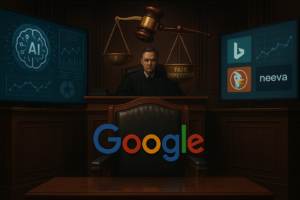OpenAI’s Non-Profit Transition: A New Era in AI Development
OpenAI’s decision to transition to a non-profit structure is a pivotal moment in the history of artificial intelligence development. This bold move reflects a deeper alignment with ethical values and societal benefit, signaling a shift in how cutting-edge technology can be developed and deployed for the greater good.
Here’s a detailed breakdown of this transformation and its far-reaching implications.
From Capped-Profit to Non-Profit: Understanding the Shift
OpenAI was originally founded as a non-profit organization in 2015, driven by the mission to ensure that artificial general intelligence (AGI) benefits all of humanity. However, as the scope of AI research grew and the need for substantial funding became evident, OpenAI adopted a unique “capped-profit” model in 2019, forming OpenAI LP, a public benefit corporation.
Under this model:
- Investors were guaranteed a capped return on their investments (e.g., a multiple of the initial capital).
- Any surplus profits were intended to flow back to support OpenAI’s broader mission.
Now, with its return to a full non-profit structure, OpenAI is doubling down on its mission to prioritize societal welfare over financial returns. This structure removes profit ceilings entirely, focusing solely on using its $6.6 billion in funding for ethical and impactful AI research.
Key Goals of the Transition
- Promoting Ethical AI Development
OpenAI’s primary objective is to ensure that AI systems are developed responsibly, minimizing risks such as misuse, bias, and unethical deployment.- AI systems must be aligned with societal values.
- Safety, fairness, and inclusivity remain at the forefront.
- Democratizing AI Benefits
By stepping away from profit-centric motivations, OpenAI aims to distribute AI’s benefits equitably, avoiding the concentration of power in the hands of a few corporations or nations. - Investing in Long-Term Research
A non-profit model allows OpenAI to focus on long-term, high-impact research areas, such as AGI safety and AI alignment, without the pressure of meeting quarterly financial targets.
Implications for the AI Industry
OpenAI’s transition could create ripple effects across the AI ecosystem. Here are the potential impacts:
- Setting a Precedent for Responsible AI
- OpenAI’s decision challenges the dominant model of private-sector AI innovation driven by profitability.
- Other companies may now feel compelled to adopt hybrid or non-profit structures to balance profit motives with societal obligations.
- Increased Public Trust in AI
- OpenAI’s move could bolster public confidence in AI technologies, particularly as ethical concerns about bias, surveillance, and job displacement grow.
- A non-profit status emphasizes transparency and accountability, fostering trust.
- Fostering Collaboration
- By prioritizing public benefit, OpenAI can engage more openly with governments, academic institutions, and non-profits worldwide.
- This collaborative approach may accelerate breakthroughs in AI research.
- Shaping AI Governance
- OpenAI’s emphasis on ethical AI development could influence global standards and regulations, encouraging policymakers to prioritize public welfare in AI legislation.
Challenges Ahead
While the transition signals progress, OpenAI faces significant challenges:
- Sustainability of Funding
- Although the organization has secured $6.6 billion, ensuring continuous funding without relying on profit mechanisms will require innovative approaches, such as philanthropic donations or partnerships.
- Balancing Mission and Innovation Speed
- Focusing on ethical and public-centered research could slow down development compared to profit-driven competitors in the private sector.
- Navigating Competitive Pressures
- With major tech giants like Google, Amazon, and Microsoft continuing to dominate the AI space, OpenAI must find ways to maintain its competitive edge while adhering to its principles.
What This Means for Society
OpenAI’s transition aligns with a growing global call for responsible AI practices. The potential societal benefits include:
- Access to Safer AI Systems: Reduced risks of harmful applications, such as disinformation or surveillance misuse.
- Equitable Distribution of AI Benefits: Ensuring that advancements reach underrepresented and underserved communities.
- Empowered Public Discourse: Encouraging broader societal input on the future of AI, fostering diverse perspectives and voices.
Conclusion: Leading the Charge for Ethical AI
OpenAI’s non-profit transition represents a profound philosophical and operational shift in how AI can be developed and deployed. By stepping away from profit motives, OpenAI underscores its commitment to ethical AI and sets a benchmark for the industry.
While challenges remain, this decision could inspire a new wave of innovation—one where technology serves humanity as a whole, creating a future that’s inclusive, sustainable, and equitable. The AI industry now stands at a crossroads, and OpenAI’s move could very well shape its trajectory for decades to come.


